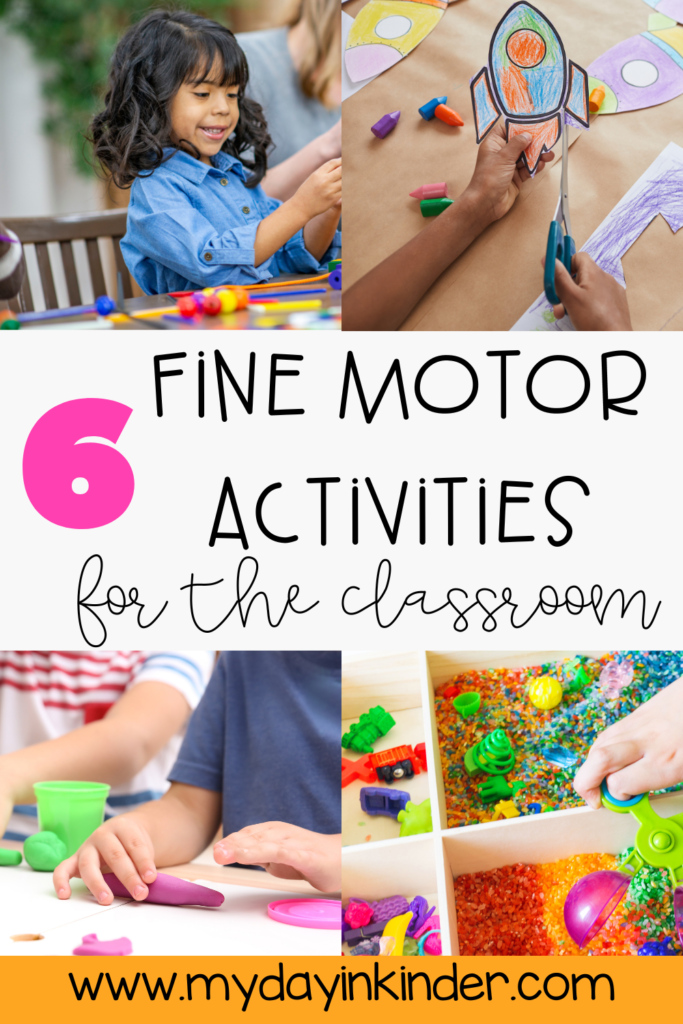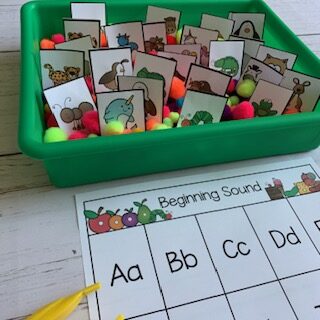6 Fine Motor Activities You Should Incorporate Into Your Lesson Plans
We’ve all had principals and school boards ask us to implement “cross-curricular” activities. These activities focus not only on one subject area like ELA but multiple subject areas like ELA and social studies at the same time. This type of planning can help students dive deeper into the topic and learn more. This also works with non-traditional areas as well. Things like fine motor or gross motor skills can easily be incorporated into your day. Including fine motor activities will give students the opportunity to work on these skills while learning, and they are sure to improve.
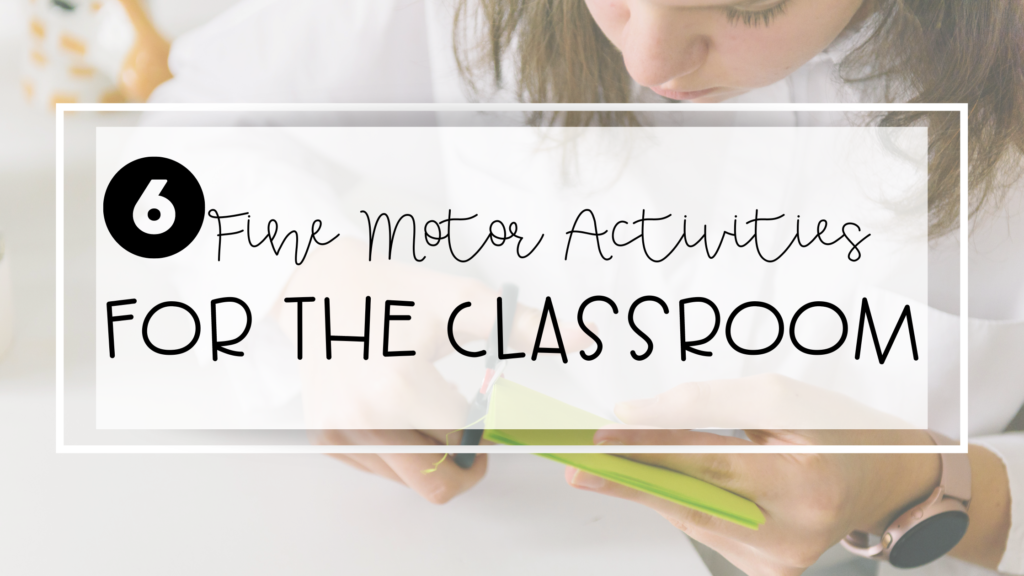
6 Fine Motor Activities For The Classroom
If you are looking for ways to incorporate more fine motor activities into your classroom, look no further. There are so many ways you can help students develop fine motor skills or their fine motor control.
Fine Motor Activity: Scissor Skills Activities
Scissors are surprisingly one of the most challenging tools kindergarteners come across. It requires a lot of skill to not only stay on the line and cut correctly. But students also need to know how to hold the scissors properly, use hand-eye coordination, and more!
Grab some scrap pieces of paper and draw different lines on them. You may include a jagged line, straight line, or squiggly line. Students practice cutting on the line. This is a great quick center activity. But remember to review the expectations and rules first. If you are looking for scissor skill pages that you do not need to make, you may want to try the Melissa and Doug Scissor Skill Books! I suggest making copies of each page so you can use the book again and again!
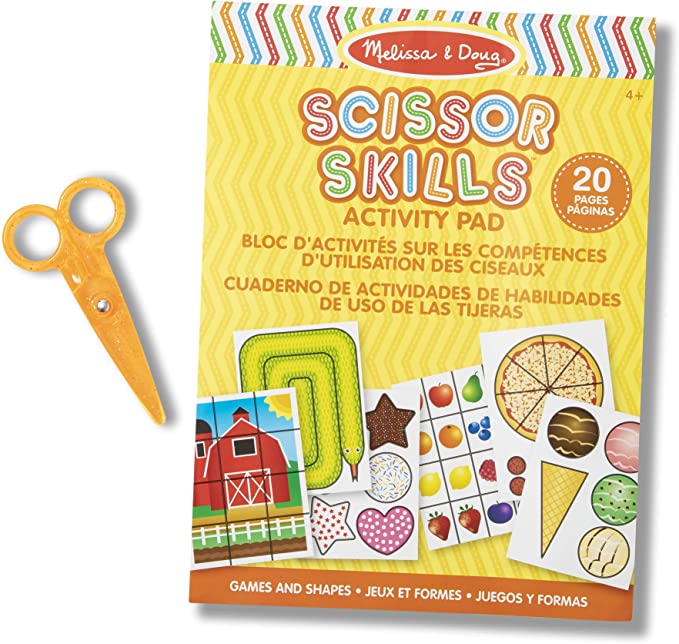
Beading
Another great fine motor activity uses beads and string or pipe cleaners. Give students beads and string or pipe cleaners and have them practice putting the beads onto pipe cleaners or string. Depending on the ability level of your students, you may want to provide different options for beading, such as small beads, large beads, different shaped beads, and different “string” choices like shoelaces, pipe cleaners, feathers, really any material they could place through a bead!
Fine Motor Activity: Lacing Cards
Lacing cards are a great tool in preschool or kindergarten classrooms. My students loved working on them during morning bins or during recess. Students work to lace the string through holes around a picture, such as a shoe, flower, or duck. You can even just use a hole punch and a paper plate. Live Well Play Together has a great step-by-step tutorial on how to make lacing cards out of cereal boxes!
If you want to incorporate lacing activities into your ELA block, consider having students lace around laminated cardstock letters, or during math, they can lace around numbers. It not only helps with fine motor skills but hand-eye coordination and helps strengthen the finger and hand muscles.
Sensory Bins
I absolutely love when I can use sensory bins to help not only with fine motor skills but also help reinforce the curriculum! I use so many sensory bins throughout the year that it’s hard for me to choose which I love the most. I’ve created bins for different months, lessons, skills, etc. In my literacy and math sensory bin bundle, you’ll find topics like letter matching, rhyming, adding, and counting!
The best part about sensory bins is how simple you can make them. Add some sand, pom poms, colored rice, etc., and you’ve got yourself a simple bin that can be placed on a desk. There’s no need to create an elaborate bin. Students will just love to feel like they are playing, not learning.
For a little extra fine motor practice, I love giving my students tweezers and having them try to pick up the cards or bigger materials like pom poms! Sensory bins are just another easy way to incorporate fine motor activities into your classroom routine.
Fine Motor Activity: Puzzles
Believe it or not, puzzles can help immensely with fine motor skills. Whether they are peg puzzles or more traditional ones, students need to use a lot of fine motor skills to complete them.
If you’ve ever walked down the puzzle aisle at Target, you know the huge number of puzzles available, from the alphabet to numbers, shapes, and even other topics like animals, planets, and world maps.
Play Dough
Play dough is great for fine motor development. It encourages students to squeeze, stretch, pinch, and even roll. Let them use play dough scissors and practice cutting too. There are so many great ways to use play dough.
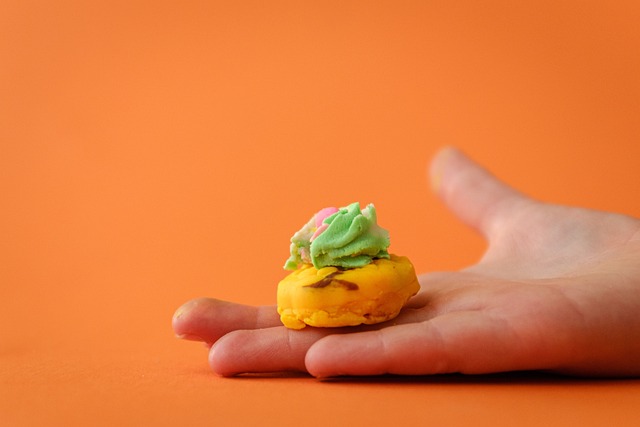
I love finding different play dough mats. Playdough to Plato has 100 FREE play dough mats available that range from fun to curriculum based.
Fine Motor Activities
Using fine motor activities in the classroom will give your little learners the perfect opportunity to practice important skills that will make their schooling career and life easier. Whether you decide to use lacing cards, sensory bins, play dough, or all of the above, you’re not going to regret the choice!
